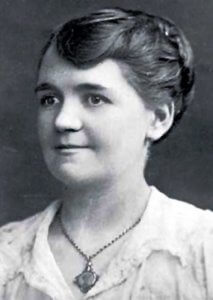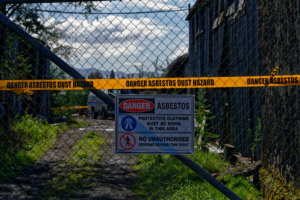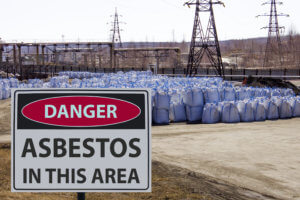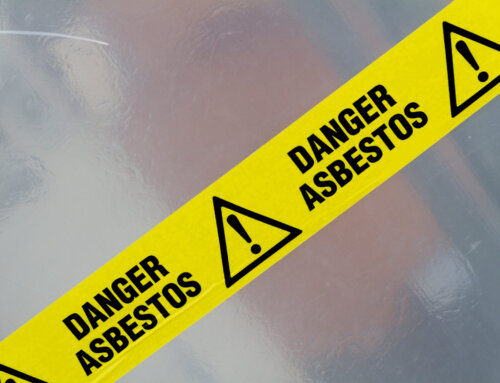Take a look at our detailed history of asbestos in the UK for useful facts and insights…
The word asbestos was first used in the 17th Century. It is derived from an Ancient Greek word meaning ‘inextinguishable.’
 Pliny the Elder
Pliny the Elder
However, as long ago as the first Century AD a Roman historian called Pliny is recorded as noticing how slaves whose clothes were made from, what we now call asbestos, tended to get sick and then die. Pliny also described how they used a form of respirator made from the bladder of animals, to try and alleviate the breathing problems that came about from inhaling asbestos fibres.

Lucy Deane Streatfield
Lucy Deane Streatfield
In 1898 a British factory inspector, Lucy Deane Streatfield first voiced concerns about the health risks arising from exposure to asbestos. Her warnings were ignored.
Dr Montague Murray
A year later, in 1899, a man of 33 years of age, visited Dr Montague Murray at London’s Charing Cross Hospital. The man complained of bronchitis. However, he had worked in an asbestos factory. He confided in Dr Murray that all the other men that he worked with had died in their thirties.
When a year later the man himself died, Murray carried out the post-mortem on his body and found that the deceased’s lungs showed signs of heavy scarring (signs that we would today know as evidence of damage caused by exposure to asbestos).
In 1906, Eight years after Lucy Deane Streatfield’s warnings about the health risks of asbestos, a Parliamentary commission confirmed the first cases of death from asbestos caused by exposure in factories.
Nellie Kershaw

Nellie Kershaw
Nellie was a textile worker from Rochdale who worked in asbestos factories from a young age. One of her employers was the now infamous, Turner Brothers Asbestos. She was the first person to be diagnosed with ‘asbestos poisoning’ whilst she was still alive. Nellie died at the age of 33, in 1924.
Her case was the first time that asbestos disease was the subject of a published article – in the British Medical Journal (BMJ).
Asbestosis was given its name in 1927, by Dr WE Cooke when writing about the disease in the BMJ.
Merewether and Price
1930 was a significant year in the history of asbestos disease, with the publication of the Merewether and Price Report on the Effects of Asbestos Duston the Lungs and Dust Suppression in the Asbestos Industry.
Within a year of the report being made public (it was simultaneously published in a US magazine), the British government introduced the Asbestos Industry Regulations 1931 to control asbestos exposure in various industries.
Richard Doll
Dr Doll was an oncologist. In 1953 he was commissioned by the asbestos manufacturer, Turner Brothers, to study mortality data amongst its workers. The company had received some encouraging results from its in house studies. This emboldened the company to engage the services of Dr Doll in the hope that he would prepare an, independent, yet favourable report on the effects of asbestos on its workers, so that it could share the findings to the outside world.
However, despite the limitations of the data he had to work with, Doll produced a damning report. He found that the death rate among male workers at the factory was ten times what would be expected on average, of men of the same age across the UK.
Far from being favourable to the asbestos industry and Turner Brothers in particular, the outcome of Doll’s research, was that it no longer left any doubt about the deadly relationship between exposure to asbestos and lung cancer.
The company made strenuous efforts to suppress the subsequent report, but Doll managed to get it published in 1955.
Despite the highly incriminating findings contained in Doll’s report, it failed to produce any immediate results whatsoever. Indeed, it would take many more years before legislation was introduced to control asbestos exposure in workplaces in the UK.
In the same year, in the UK, the Ship Building and Ship Repairing Regulations 1960 were introduced. This piece of legislation set out provisions to protect workers in the shipyards from being exposed to asbestos in certain areas of the workplace.
Smither, Gilson and Wagner
In the November 3rd, 1962 edition of the British medical Journal, a letter from Messrs Smither, Gilson and Wagner was published. The letter indicated that there may be an association between mesothelioma and exposure to asbestos dust. Furthermore, the authors suggested that in a number of mesothelioma cases, it appeared the exposure to asbestos was only minimal.
Newhouse and Thompson
In 1965, a report published by Messrs Newhouse and Thompson featured in a Sunday Times article which labelled asbestos as ‘the killer dust’.
Newhouse and Thompson carried out their research on cases of mesothelioma. They found that mesothelioma could arise out of second-hand contact with asbestos and minimal contact at that.
The Sunday Times feature ensured that for probably the first time, the dangers of asbestos were being made more widely known to the general public, as opposed to just the medical profession and those in the asbestos industry.
The 1966 Annual Report of the Chief inspecting Officer of factories stressed the need for suitable respiratory protection to be made available to protect those workers involved in the removal of asbestos lagging and in addition to workers who were not directly involved in that work, but who were carrying out other duties nearby.
In 1967 the Mesothelioma and Asbestosis registers were established.
In its 1968 report the British Occupational Hygiene Society (BOHS) proposed a safe hygiene standard for white asbestos (chrysotile). The standard was of worldwide importance for many years.
The Asbestos Regulations 1969 came into force in 1970. These provided guidance on maximum limits for asbestos exposure. The duties imposed by these regulations went further than any previous regulations had so far and applied to all engineering works, factories and building operations.
1970 saw the start of a voluntary ban on UK imports of blue asbestos (crocidolite). 1971 saw the introduction of ‘The Great Britain Asbestos Survey’ which ran until 2005. Its aim was to describe the frequency of asbestos and mesothelioma cases among those taking part in the survey.
In 1972 the first successful asbestos related disease claim was won at the House of Lords.
Increasing amounts of government legislation controlling the use of asbestos introduced
The 1980s saw the introduction of a raft of specific pieces of asbestos legislation or legislation that included regulations on the use of asbestos, including:
1980 Voluntary ban on imports of amosite (brown asbestos).
1983 Asbestos Regulations : contractors who worked with asbestos insulation and coating to were required to obtain a license from the Health and Safety Executive.
1985 Asbestos (Prohibitions) Regulations: banned the import into the UK of blue and brown asbestos. The use of these types of asbestos was now also prohibited. A landmark piece of legislation.
1987 Control of Asbestos at Work Regulations: controls were now introduced to prevent workers from being exposed to asbestos anywhere in the workplace.
1988 Asbestos (Prohibitions) (Amendment) Regulations: A prohibition came into force on the use of spray applications of paint containing asbestos.
1990 The Control of Asbestos in the Air Regulations: these imposed controls on the limits of asbestos emissions into the air by installations that used asbestos processes.
1992 Control of Asbestos at Work (Amendment) Regulations: provided a new tighter level for the use of chrysotile (white) asbestos.
Peto and others article in the Lancet
In 1995 J Peto (and others) had an article published in The Lancet, called ‘Continuing increase in mesothelioma mortality in Britain’. Its findings, included:
- Asbestos deaths were increasing at a rapid rate.
- Twenty five percent of deaths from mesothelioma were found not to be from amongst those in manufacturing industries but rather building workers, especially carpenters, plumbers, gas fitters and electricians.
- The numbers of deaths from mesothelioma were likely to continue to increase for at least 15 and more likely, for 25 more years.
Chrysotile (white asbestos) is banned
1999 saw another landmark moment in the history of asbestos in the UK when the final comprehensive ban on asbestos saw chrysotile (white asbestos) being banned from use in, and import into, the UK.
The introduction of the Compensation Act 2006 established that a claimant is entitled to recover compensation in full, jointly and severally, against each defendant to a claim for asbestos compensation, where it wasn’t possible to accurately apportion blame for a person’s asbestos disease, between the individual defendants to the claim.
Important asbestos disease cases of the 21st Century (so far)
2002 Fairchild v Glenhaven Funeral Services (2002) UKHL 22 – where a claimant could satisfy the burden of proof that one employer had materially contributed to their asbestos exposure, the claimant could claim the whole amount of compensation from them, even if the claimant had been exposed to asbestos at other places of work.
2006 Barker v Corus (2006) UKHL 20: claimant was exposed to asbestos during course of employment with various companies but also whilst he was self-employed. Did it matter that he may have contributed to his own asbestos exposure? Not in terms of liability still attaching to the other employers it didn’t, only in relation to damages awarded being reduced to take into account his own share of culpability.
2011 Supreme Court case – Diane Willmore and Enid Costello: families of two mesothelioma victims awarded compensation after court rules that no need to show a defendant’s actions cause at least a doubling of the risk of getting meso.
2012 Supreme Court ruling – insurance claims: Durham v BAI : insurance companies’ policies were ‘triggered’ when claimants suffered asbestos exposure, not when symptoms manifested themselves. This was a major victory in the courts for asbestos victims and their families.
2018 Bussey v Anglia Heating: Court of Appeal sets the threshold for asbestos related cases and rejects the argument that there are ‘safe levels’ of asbestos exposure, in a landmark victory for asbestos claimants.
…and finally (for now, anyway)
In early 2021, scientists have made major breakthrough that could help mesothelioma patients survive for longer. Drug trials have found that the drug nivolumab increases survival periods and makes the disease more stable.


 Pliny the Elder
Pliny the Elder




